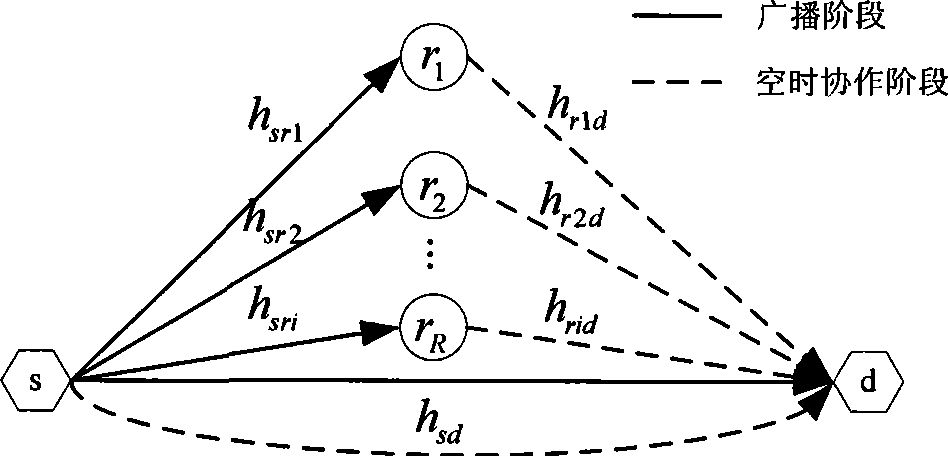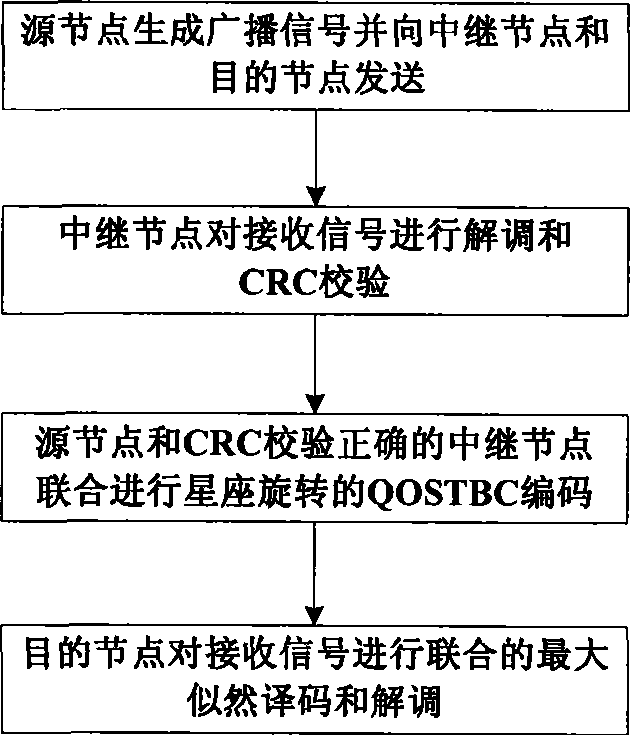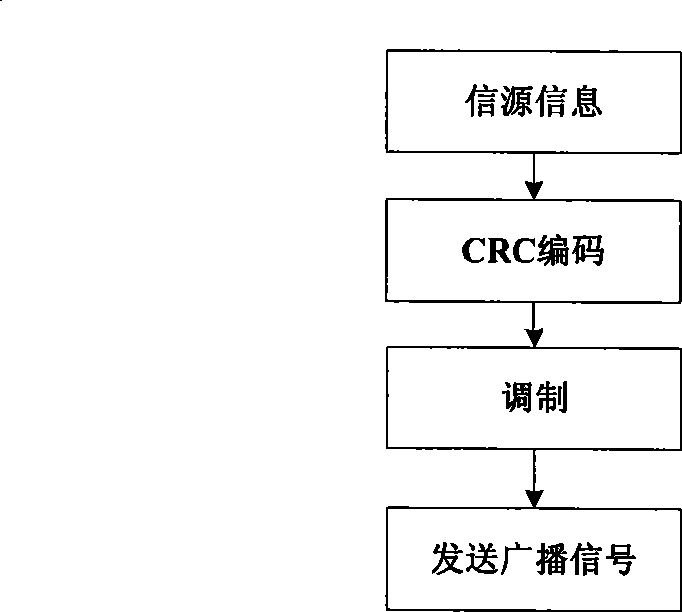Collaborative diversity method based on constellation rotation quasi-orthogonal space time block code
A technology of space-time block coding and cooperative diversity, which is applied to the prevention/detection of errors through diversity reception, electrical components, digital transmission systems, etc., and can solve the problems of difficult to design OSTBC, low system transmission rate, and unguaranteed code rate, etc. question
- Summary
- Abstract
- Description
- Claims
- Application Information
AI Technical Summary
Problems solved by technology
Method used
Image
Examples
Embodiment Construction
[0041] 1. System model
[0042] figure 1 A multi-relay cooperative system model is given, which includes a source node s, R relay nodes r i (i=1,...,R) and a destination node d. The sending power of the source node and the relay node are P s and P r . Suppose s→r i , s → d, r i The channels of →d are all flat Rayleigh fading channels, and the channel fading coefficient hsri , h sd , h rid respectively obey the mean of 0 and the variance of with complex Gaussian distribution.
[0043] 2. Implementation steps
[0044] refer to figure 2 , the present invention utilizes figure 1 The specific steps for the multi-relay space-time cooperative system to perform cooperative diversity transmission are as follows:
[0045] Step 1, the source node s generates a broadcast signal and sends a broadcast signal to the relay node r i Send d to the destination node, the specific process is as follows image 3 shown.
[0046] First, the source node s sends the source informa...
PUM
 Login to View More
Login to View More Abstract
Description
Claims
Application Information
 Login to View More
Login to View More - R&D
- Intellectual Property
- Life Sciences
- Materials
- Tech Scout
- Unparalleled Data Quality
- Higher Quality Content
- 60% Fewer Hallucinations
Browse by: Latest US Patents, China's latest patents, Technical Efficacy Thesaurus, Application Domain, Technology Topic, Popular Technical Reports.
© 2025 PatSnap. All rights reserved.Legal|Privacy policy|Modern Slavery Act Transparency Statement|Sitemap|About US| Contact US: help@patsnap.com



